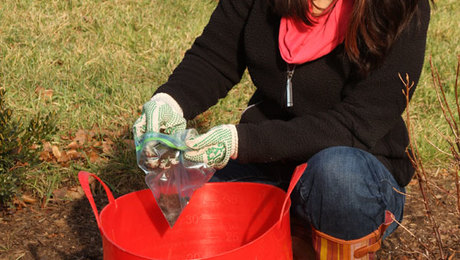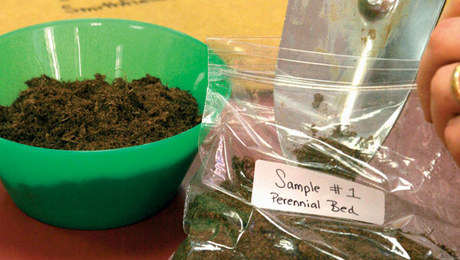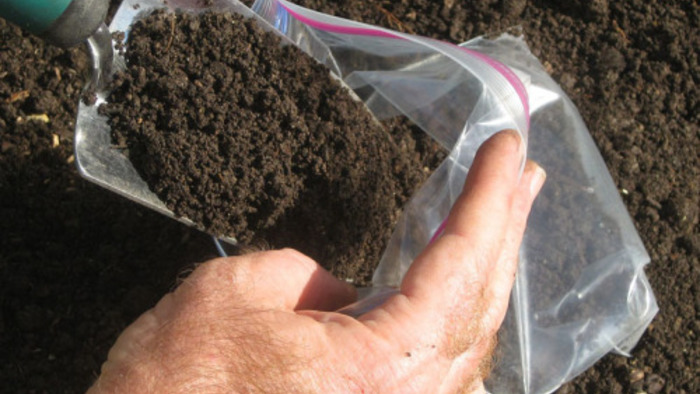In this video, Lee Reich, author of Weedless Gardening and Uncommon Fruits for Every Garden, explains why knowing the drainage of an area of soil is important for gardening.
Drainage is about how fast and how well water drains through the soil and is one of the most important characteristics of the soil. Even if the soil is very fertile, plants aren’t going to be able to use those nutrients if the drainage is poor. There are two primary reasons why drainage can be poor: (1) the water table in that area is too high, or (2) the soil’s clay content is high. Clay soil is full of small particles that don’t create much space between them for water.
Reich then demonstrates an easy method for determining the drainage of an area of soil.
1. Remove the top and bottom from a metal can.
2. Dig a hole and bury the can so that its top is about an inch above the surface.
3. Fill the can with water and let it drain. Repeat, but this time take a ruler and measure the rate that the water drains out of the can.
If the water in the can drains out at least 1 inch per hour, the drainage is good. If it drains out less than 1 inch per hour, the drainage is poor. You can still plant in such an area, but you will need to either build a raised bed, install drainage tile, or select plants that can live in soil with poor drainage.
If you decide to plant in a raised bed, keep in mind that it will dry out more quickly than the surrounding area. To mitigate this, you can irrigate and/or use mulch to slow evaporation.
More information on raised beds
A Stylish Raised Bed Almost Anyone Can Build
Building a Raised Bed, Part II



















Comments
Log in or create an account to post a comment.
Sign up Log in